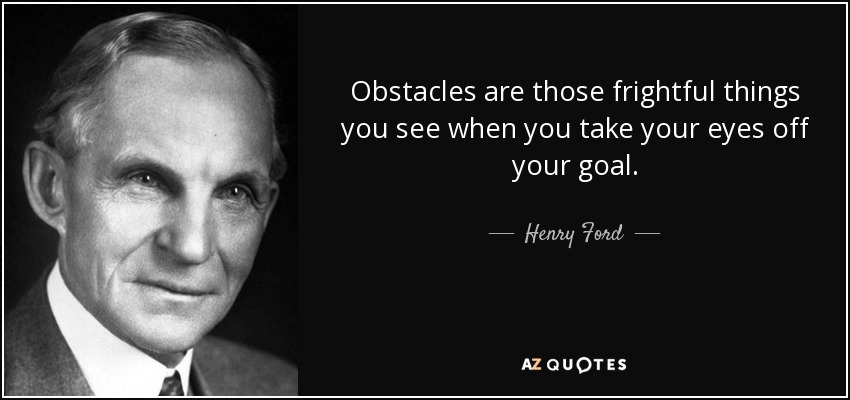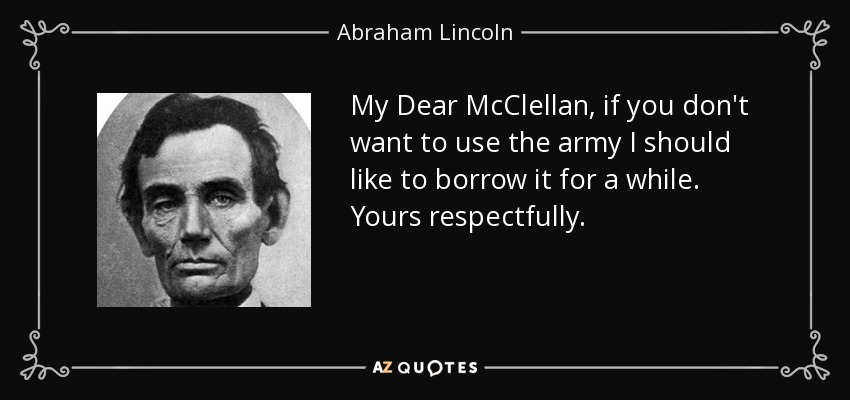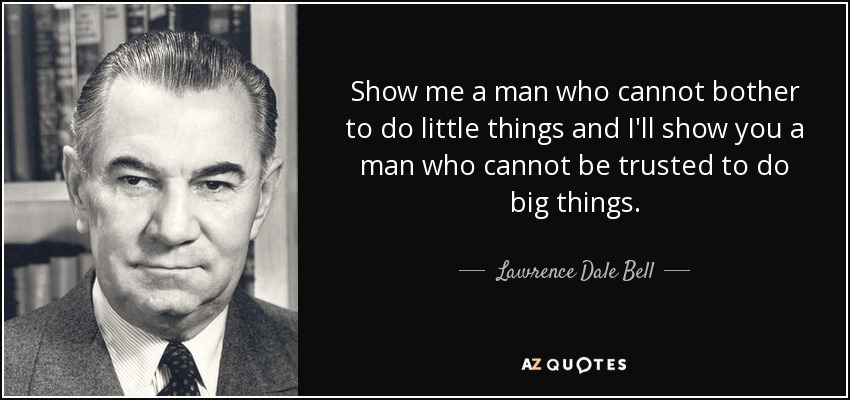Click here to return to Blog Post Intro

When leaders face obstacles, they don’t “phone it in.” They remain present and stay engaged.
Once we take on the task of leading people, we have to somehow harmonize their needs with the needs of the group, the organization, and the task at hand.
Our goals, then, are threefold:
- understand the relationship between the leader and the follower,
- understand how ethics and character contribute to high performing teams, and
- appreciate the “teams within teams” concept of organizational leadership.
Cornerstone: Brick One: Integrity
If we’re to inspire people to follow us, integrity must be the cornerstone of who we are. That’s why the first “brick” in the foundation is Integrity. It is a prerequisite for any success.
The word “integrity” itself comes from the same root word as “integrated,” from the Latin word integritatem, meaning “soundness, wholeness, blameless.”
Honor Codes, and other codes of conduct and ethics are the “systematization” of the principle of Integrity. For example, at Addison’s alma mater, Texas A&M University, there is an honor code: “Aggies will not lie, cheat, or steal, nor tolerate those who do.”
The Naval Academy has a somewhat more expansive expression of what they expect from their midshipmen: “Midshipmen are persons of integrity: We stand for that which is right. We tell the truth and ensure that the full truth is known. We do not lie. We embrace fairness in all actions. We ensure that work submitted as their own is their own, and that assistance received from any source is authorized and properly documented. We do not cheat. We respect the property of others and ensure that others are able to benefit from the use of their own property. We do not steal.”
At Virginia Tech, the Undergraduate Honor System states that accepting membership in the University community means the student accepts the “fundamental beliefs” reflected in the Honor Code:
- That trust in a person is a positive force in making that person worthy of trust,
- That every student has the right to live in an academic environment that is free from the injustices caused by any form of intellectual dishonesty, and
- That the honesty and integrity of all members of the university community contribute to its quest for truth.
Physicians’ ethics are guided by various versions of the Hippocratic Oath (“I will apply, for the benefit of the sick, all measures which are required, avoiding those twin traps of overtreatment and therapeutic nihilism.”)
No matter who else may be in the room, integrity is always a voluntary decision. We examine a person’s behavior based on honesty and truthfulness.
A leader with integrity, one who practices it and demands it, will create an environment where people know they’re treated fairly and feel comfortable being themselves. Authentic inclusion respects differences and invites participation on equal footing. Patronizing someone’s background and tokenism are transparent and are ultimately counterproductive.
In their book, Reframing Change, social scientists Jean Kantambu Latting and Jean Ramsey use the terms “Dominant” and “Nondominant” traits to describe how to understand diversity in the workplace (race, religion, cultural background, relationship status, etc.). Latting & Ramsey make the case that leading consciously means understanding where employees are coming from and making appropriate adjustments.
A leader of integrity follows the rules and sets the example because it’s the right thing to do. Never underestimate the power of personal example. People respond to a leader who’s engaged personally.
Once one’s integrity has been compromised, it’s very difficult to get back. It’s often said that the measure of a person’s integrity is how willing they are to do the right thing even when no one is around. Integrity means wanting to do the right thing because it’s the right thing.
The leader’s character must be beyond reproach and unquestioned. A breach of integrity is like mildew: It may not be obvious at first, but it doesn’t take long to make the whole place stink.
Sometimes even a perception of a personal breach of integrity can be enough to demoralize the rank and file. Leaders must manage perceptions of their behavior as carefully as their actual behavior.
Leaders must guard against “the boss said” syndrome. Be careful of off-handed remarks, and be certain subordinates know the difference between brainstorming and orders to do something. Also, be careful about which perks you accept as a leader. There is a fine line between accepting earned privileges and becoming unapproachable.
Organizations where a “dictator leader” is in a key or senior position are headed for a cliff. Senior leaders can never fully foresee the extent their personal leadership style will have on the larger organization. Guard your words and actions carefully.
Leaders need to be clear and honest about what their teams can do, how quickly they can do it, and how much it will cost.
Employee feedback has to be honest and focused on making them better at their jobs. There’s no room for personal agendas. Regular, honest feedback, informal or formal, is absolutely essential for highly performing teams to maintain (or increase) their performance.
Addison notes, “Whenever I give feedback, I always allow the ‘ratee’ to provide feedback to me as well. It offers them an opportunity to clarify things, and I’ve learned a few things about my leadership style that I’ve adjusted over the years by asking and being open to what my subordinates were willing to tell me.”
The more senior the leader, the less likely he is to receive honest feedback from his subordinates. This makes the task of eliminating blind spots more difficult as leaders become more senior in the organization.
Honest feedback is vital to improved performance, but be sure you guard the ratee’s pride. Always address behavior, not the person, and above all be kind.
To accomplish our goals, be they personal or corporate, integrity must be the hallmark of our creed as leaders. There must be trust in the organization, because to fail in the integrity department is to fail in the job and in life.
When leaders make their position all about themselves, they’re doomed to failure. Once the leader understands their job is to lead and inspire others rather than be served, the more effective they’ll be in achieving their goals.
Leaders need to remember that while there will sometimes be adverse consequences for making the right call, there will always be consequences for unethical decisions. It takes a great deal of courage to stand up to a boss. Most often the pressure to make unethical choices comes from peers. The excuses are well worn: “Everybody is doing it,” “No one will know,” “It’s only pennies,” etc. It takes a special kind of moral courage to walk the line between estrangement of one’s co-workers and compromise of one’s ethics.
Brick Two: Respect
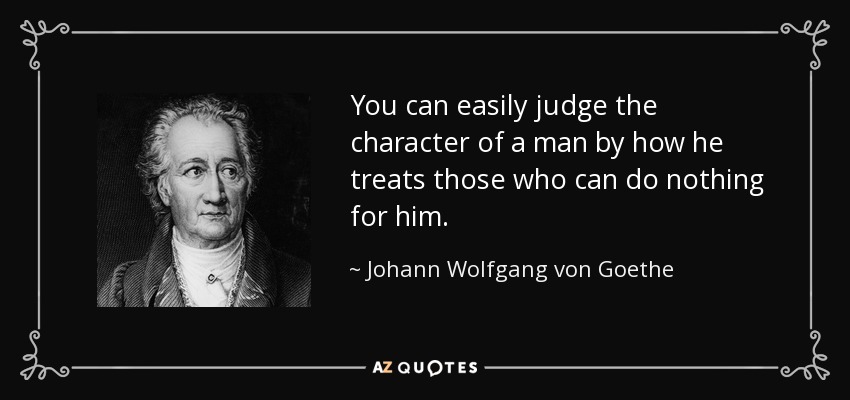
The second brick in the foundation of leadership that’s necessary when leading leaders is respect. The leader must model respect and demand it of their teams.
Make your expectations about employee behavior and organizational goals known on the first day in a new position, then reinforce those expectations often. It is very important for a leader to explicitly outline his or her expectations.
Bad news never gets better with age. Be sure you are the sort of person employees know that they can bring bad news to you and that you’ll act. Leaders have to do the hard work of holding to personal, professional, and legal standards.
If every error were a “mortal sin,” then the chilling effect on the the team would stifle creativity and reduce the chance for success. Leaders have to create and maintain an environment where individual team members know they are valued and respected not only for their contributions but because they were valued as people.
Leaders have to grow their company’s future leaders. Branch managers, assistant managers, team leaders, and project managers have to deliberately develop their teammates’ and employees’ leadership skills by giving them opportunities to lead and then letting them. Give people the opportunity to excel, give them the tools to be successful, and then guide them to success.
The worst error a leader can make is not to allow employees to make errors. Conversely, the best investment in the company a leader can make is to develop employees that will grow into the future leaders in the company.
We should not expect to be respected merely by changing our rank insignia. We had to earn the respect of our followers by treating them fairly, communicating clearly, and following the rules.
Respect for the institution is just as important as respect for between teammates. If employees don’t respect their company, it’s likely they won’t respect the company’s customers or their own fellows. That’s a recipe for a very unhappy and unproductive work environment.
Before employees can become “engaged,” they have to believe they’re valued and respected by the institution and their co-workers. No matter how high the pay is and how much free food a company hands out, if the employees believe they are being bribed or bought, they will not feel valued.
The leader creates an environment of respect by first and foremost respecting the members of his team. While you can’t be your employees’ friends, you can be a friend to them. Understand your employees’ goals and dreams and help them achieve them. Doing so will pay dividends in work environment harmony and productivity.
As four-time Olympian Ruben Gonzales put it, “If you are trustworthy and passionate about your cause, you will attract followers. You will become a person of influence, which is what leadership is all about.”
In the military, there is a saying that illustrates how leaders see their roles regarding the care of the people under their charge: leaders eat last (see my summary of Simon Sinek’s book with that title here). What this means is that the leader has to provide for her people before accepting comforts for herself.
A good officer or sergeant makes sure his troops are fed before eating themselves. They also share in the suffering of their troops. If it’s cold meals out of a bag for the troops, it’s cold meals out of a bag for the leader. This behavior demonstrates to the troops that they have value and that the leader himself is committed to their well-being and willing to share in the discomfort of even the lowest ranking Airman.
Respect is earned through behavior. The old adage, “They don’t care how much you know until they know how much you care,” is still true. Most mistakes are fine; correct them, then move on…
Brick Three: Leaders Lead
U.S. Navy Admiral Chester W. Nimitz (1885-1966) said, “When in command, command.”
Although the term “manager” is a common title in business and public sectors, Addison explains that there is a reason he chose to use the word “leader” throughout this book instead of “manager.” We manage things, but we lead people.
A leader can only “bark” so many times before their team simply tunes out the raised voices. So yelling and demonstrations simply don’t work very often and neither does rule by fear. A leader who relies on fear to motivate their employees has a very shallow toolbox.
Most organizations have more than a single leader. They have “layers of leaders,” and the principle of “Leaders Lead” requires that all leaders exercise their authority. Leaders at all levels should show initiative and work together.
Expectations must be very clear, but follow through is just as important. “Inspect” what you “expect.” (“Hat tip” to Admiral Hyman Rickover, U.S. Navy)
Entrepreneur and co-founder of Medical Imaging Company, combat veteran, and former fighter pilot David Specht once shared his theory about why people fail that is very astute: “If someone fails, they usually fail for one of three reasons: either they weren’t trained, they weren’t resourced, or they weren’t led.”
Ulysses S. Grant was the fourth General-in-Chief of the Union Army. Lincoln fired the first three either because of personal conflict or perceived incompetence.
A Royal Air Force maxim says, “Proper planning prevents poor performance.” With clear and easily understood guidelines, the leader must be prepared to hold employees accountable for poor performance and must address that performance deficiency quickly.
Remember, the ultimate purpose of discipline is to rehabilitate the performance of the employee not change the employee into another person. Discipline must be swift because it is uncommon that an employee’s poor performance goes unnoticed by the rest of the team. The failure of the leaders to address substandard morale drags down the entire team.
Successful leaders set clear goals, communicate them to their subordinates, and ensure those goals align with their bosses’ goals.
It is vital for the leader to push decisions to the lowest possible level or risk organizational gridlock. Google is a fabulous example of this principle. The leaders at Google empower their employees to do self-directed projects on company time with the idea that eventually their effort will pay off for the company.
Google calls this approach “Innovation Time Off,” and the company encourages their engineers to spend 20% (!!) of their time working on projects that interest them. Google apps like Gmail, GoogleNews, and AdSense are examples of apps that made it into the Google product line because leaders empowered employees to innovate and take risks.
The difference between a mediocre organization and an excellent organization is often these first line leaders’ commitment to the company vision. That commitment is measured in how that first line leader can translate the task he or she’s been given with sufficient enthusiasm to get the employees motivated to excellence. Investing in first line leaders has an enormous return on investment. First line leaders are most responsible to motivate employees and make daily decisions. Good ones can make the company a lot of money.
One Texas Aggie cadet was quoted in Will van Overbeek’s “Aggies” in the 1982 Texas Monthly Press, “There’s a saying around here that you have to learn how to follow before you learn how to lead. Believe me, you follow like hell your freshman year!”
Decisions are never made in a vacuum; understanding the environment is crucial to making good ones. Sharing information when prudent can be the difference between a poor decision and a good one.
Another way to model good followership is to work your own job as if you were sitting in your boss’s seat. By trying to understand your boss’s stressors and stakeholders, you can better deliver what your boss expects of you. Actively listening for context when your boss assigns a task, then anticipating the questions your boss will be asked by their boss, gets the product much closer to final.
Deliberately develop leaders in your organization. A resilient organization is one that distributes authority and empowers leaders to make decisions.
Brick Four: Teamwork
Learn from others’ mistakes…you don’t have time to make them all yourself. ~G.K. Chesterton
“We” Is More Powerful Than “I” In any endeavor, teamwork is usually the key to success. It is a rare task that a person accomplishes on his or her own.
Winston Cup champion Jeff Gordon said it best when he said, “Teamwork is everything. It takes all of us working together. We win and lose together.”
In any workforce, almost everyone has something to contribute.
Group Dynamics and the Leader
In 1965 Bruce Tuckman developed one of the best models for understanding group dynamics: “Forming-Storming-Norming-Performing.”
(1) In the first phase, “Forming,” the group begins to get to know each other, sort out roles, and establish order.
(2) The next phase, “Storming,” describes the friction between the group members as they come into conflict over their place in the group and the group’s purpose.
(3) “Storming” is followed by “Norming” as the group establishes patterns and standards for how they’ll operate.
(4) Finally, in the “Performing” phase, the group is firing on all cylinders. They’ve worked out their rules, established a managerial system, and everyone has a role.
Tuckman noted how the leader’s role was to guide the group through the stages, changing leadership styles as the group matured.
Giving teams a sense of mission, particularly with volunteers, is very important. People will give their best when they believe in their cause.
Don’t mistake “harmony” for a group that is “Performing.” Some teams can all get along famously, but without clear, achievable goals, even the simplest tasks can become muddled.
Leaders should deliberately recognize and reward excellence of members as a means of encouraging excellence for both the team as a whole and by individuals. Leaders don’t have to do recognition all by themselves. Subordinate leaders can assist by prompting the senior leader to recognize employees and keeping up on personal triumphs and tragedies. Remind the junior leaders often to “push up” requests for recognition by seniors.
Team awards can take many forms: peer nominations, on-the-spot, and formal. There’s no one formula, so find what works for your organization and go for it! A hand-written note, presentation of a challenge coin, a personal word of encouragement during a visit to the work center, or even the presentation of a small cash award are all examples of informal recognition.
A handwritten note is always more effective than a form letter. Save the typed memos for official correspondence, and hand write recognition notes.
Show Initiative, Work Together
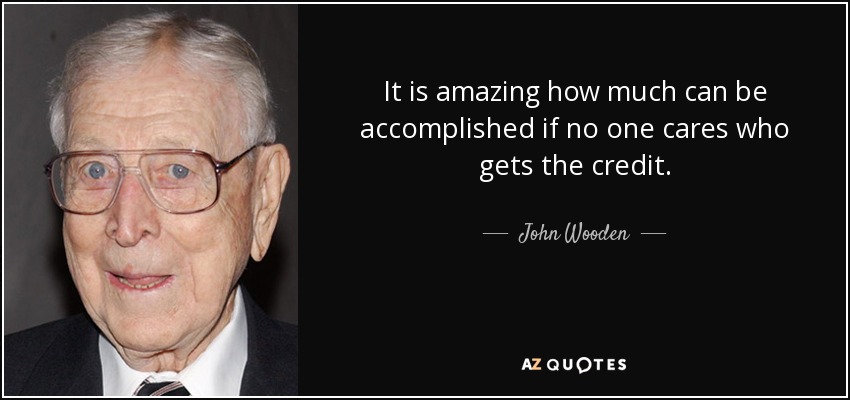
Finally, one of the most important traits a leader can cultivate is initiative.
Team members call out danger or pitfalls for their teammates. In Air Force parlance, that’s called being a “good wingman.” In any form of combat, the wingman is the one charged with protecting the lead. The wingman is the extra pair of eyes and ears, as well as the extra weapon, to keep the lead safe by calling out danger when he sees it and eliminating threats when possible.
Brick Five: Little Things Matter
In his book, My American Journey, General Colin Powell included in his “rules” the phrase, “Check Small Things” because he understands that little things add up to big things.
A leader who’s engaged, who pays attention, can create an organizational culture where the team pays attention to what the leader wants them to do. The principle here is simple: People do what the leader checks, not necessarily what the leader expects.
Addison explained, “As a senior leader, I rarely ask questions to which I don’t already know the answer. The question often serves to stimulate analysis and focus the discussion on what I’m truly interested in understanding.”
Coach Lou Holtz had a win/loss record of 249–132–7 during his coaching career, including a perfect 12–0 record during Notre Dame’s 1988 National Championship season. Coach Holtz is a believer that attention to detail is a key to success and once said, “In the successful organization, no detail is too small to escape close attention.”
Leaders should be very careful what they say, and to whom, or risk someone executing an order that was not given. People are eager to please, especially for a boss they like (or are afraid of!) and will try to anticipate what a leader needs. This leads to a lot of “the boss said,” or in Addison’s case, “the colonel wants” orders being passed around on behalf of the leader.
When leading more inexperienced people, sometimes the leader has to be willing to accept less than optimum results, even personal discomfort, in order to encourage those people to grow.
Bill Snyder, the head football coach at Kansas State, is legendary for his attention to the little things. Snyder’s 159 wins make him the 11th winningest coach in the NCAA Football Bowl Series. He won the 2011 Woody Hayes and The Sporting News Coach of the Year awards and was a four-time winner of Coach of the Year honors from the Big Eight Conference. Of attention to detail, Snyder says: “If you do pay attention to detail and the ‘little things’ are important to you, you make them important to people.”
Bob Stoops, University of Oklahoma head coach and former Snyder assistant, said of his mentor, “It’s hard to say one thing when you’re around a guy for 10 years playing and coaching and then seven years as a coach for him, I think attention to detail, all the little things matter; evaluation and developing your team and being methodical and constant about it.”
The main difference between a tyrant and an inspirational leader: the leader’s willingness to do the same things he is asking his people to do.
Seemingly insignificant details can have enormous consequences. The leader should understand which details are important and which are extraneous. Work area cleanliness is sometimes a good indicator whether the staff is organized and motivated.
Customers and partners often make sweeping decisions about competence based on a few small details: Ensure your workplace is professional and clean.
Mickey’s Rules
- Have a direction and know what it is. Go there.
- Don’t spook the herd. Emotional demonstrations are always counter-productive and stifle initiative.
- Don’t let “perfect” be the enemy of “good.”
- “Can’t” never gets anything done. Keep it out of your vocabulary.
- The first report is usually wrong. Be patient and ask questions.
- Asking the right questions is usually better than knowing the right answers.
- The other team is not the enemy. The enemy is the enemy; don’t confuse the two.
- Be curious. Ask “Why?” a lot. Keep asking until you understand.
- Walk the horses. No one can go full throttle all the time.
- Drink your water, eat your lunch, and make new friends.
- Check your “moral azimuth”…if you’re doing something that you wouldn’t want posted on the Internet, it’s probably illegal, immoral, or fattening.
If a leader is truly successful, you tell in the demeanor and character of the people he leads.
Integrity must be our watchword, because, without it, we cannot hope to build teams that trust each other. Respect is the common ground teammates join on to accomplish their professional and personal goals. Leaders Lead when they take charge and motivate others to achieve and grow. Teamwork is essential to reaching any end; individual achievement is almost always the result of shared effort. Finally, a leader’s strict attention to detail means that he fully understands the task and which Little Things Matter to getting things done. These are basic ideas, but without these principles as a solid foundation, a leader is without a starting place.

